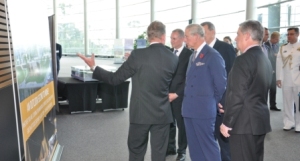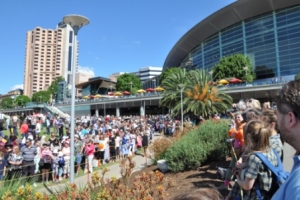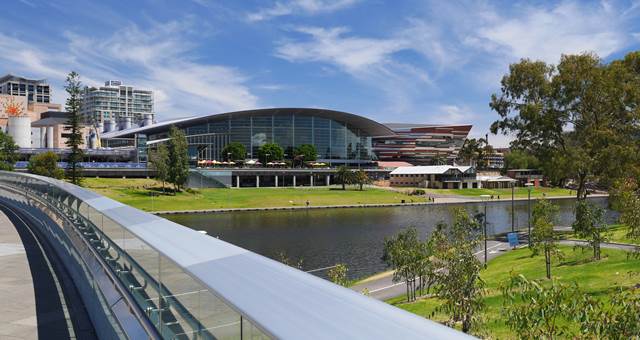The Adelaide Convention Centre hosted Prince Charles this month as part of his official Australian visit with the Duchess of Cornwall.

The Adelaide Convention Centre received a royal visit when Prince Charles visited the Centre recently.
It was the Prince’s second visit to the Centre having previously attended an official function at the Centre in 1988.
The Prince was accompanied by the Premier and Governor of South Australia and Raymond Spencer, Chairman of the State’s Economic Development Board.

During his visit, the Prince was briefed on the Centre’s $350 million expansion.
Adelaide Convention Centre Chief Executive Alec Gilbert was given the opportunity to brief the Prince on the Centre’s $350 million expansion, which has a UK connection having been designed by Woods Bagot in association with London-based international architect Larry Oltmanns.
The Prince also had a series of discussions at the Centre with a group of key South Australian business leaders before departing for an official reception at Government House.
Adelaide Convention Centre Chief Executive Alec Gilbert said it was a privilege to welcome the Prince to the Centre
“He’s passionate about architecture and shared an interest in plans for the Centre and the Riverbank precinct redevelopment.”

Onlookers outside the Centre awaiting the Royal arrival.
This year, worked started on the $350 million expansion of the Adelaide Convention Centre with civil works on Stage One to create 4,300 square metres of multipurpose convention floor space now well underway and due for completion in mid-2014.
Stage Two of the redevelopment, replacing the existing Plenary Building (home of the original Centre in 1987) with a multi-purpose, state-of-the-art facility with plenary capacity of up to 3,500 seats, is scheduled for completion in June, 2017.
“The major redevelopment of the Centre will again position South Australia as a leader in the international convention market by providing one of the largest, most flexible and up-to-date meeting places in the world and removing existing capacity restraints,” said Gilbert.


